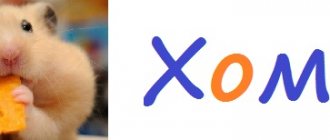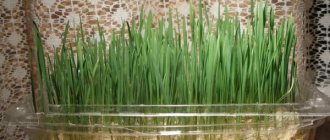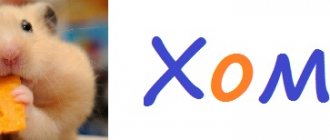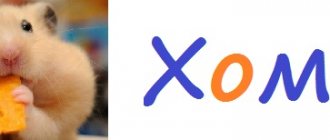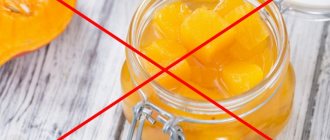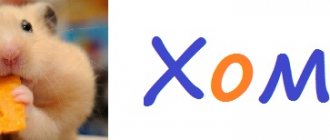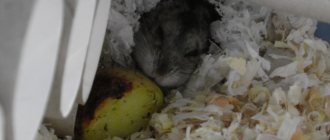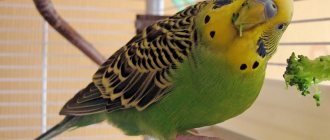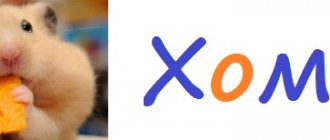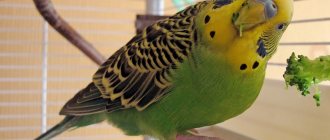With the arrival of summer, more seasonal products appear on our table: different varieties of berries, fresh home-grown vegetables, juicy greens straight from the garden. All of them contain a huge amount of useful substances and microelements. When we consume summer gifts for food, we often think about treating our pets to them. Hamsters, like other rodents, benefit from greens. Therefore, let’s consider whether hamsters can have parsley and dill, and how to serve them correctly.
The benefits and harms of dill for a hamster
Veterinarians say that dill is very useful for females bearing offspring as vitamins. However, you can give no more than 50 g and once a week. It is also worth including in the diet of a female who has just given birth to improve lactation.
Excessive amounts may cause diarrhea or diarrhea.
Dill seeds are not only a laxative, but also a diuretic.
They increase the secretion of bile and gastric juice, lower blood pressure, and an overdose is especially dangerous - the animal may lose consciousness. Therefore, it is strictly forbidden to give them to hamsters!
Are nitrates dangerous?
Potentially yes, but only in large quantities.
That is why the content of these compounds in food products is controlled at the state level, and maximum permissible amounts for consumption are established for them: the World Health Organization sets the upper limit for safe consumption of nitrates at 3.7 mg per 1 kg of body weight. Thus, for a person weighing 80 kg, the safe amount of nitrates is about 296 mg; A dose of 8-15 g is considered lethal. But here, too, everything is not so simple. Is exceeding the recommended norm always dangerous? To answer this question, it is worth understanding the mechanisms of transformation of nitric acid salts supplied with food. The fact is that in “pure form” nitrates are not absorbed in the human body, and 60-80% of them are simply excreted in the urine. By the way, this elimination mechanism assumes the absence of a cumulative effect - that is, in the body of a healthy person with normal kidney and liver function, nitrates do not retain or accumulate. Moreover, in medical practice there have been no cases of poisoning by nitrates contained specifically in plant foods: the peculiarities of the metabolism of these compounds (which will be discussed below) and the peculiarities of preparing the products play a role here. For example, washing and heat treatment reduce the amount of nitrates. It is much more likely to get a dangerous dose of nitrates from water contaminated with nitrogen fertilizers and not treated.
Moreover, there is not even a consensus in world science as to what amount of nitrates is really considered harmful to health: their content in food and water and the characteristics of absorption in the body vary so much that it is hardly possible to establish the actual amount consumed and compare it with a certain norm . For example, the European Institute for Food Safety (EFSA) in 2022 set the maximum daily intake of nitrates at approximately the level recommended by WHO - and itself stipulated that its occasional excess in all age groups most likely does not lead to any pronounced consequences . It is clear that we are not talking about lethal doses of several tens of grams, which were again mentioned above.
“Scary facts” about green salad: it contains nitrates
The highest concentration of nitrates is observed in leafy vegetables: spinach, arugula, parsley, dill, salad varieties of cabbage, etc. In essence, this is understandable, because nitrogen is necessary primarily for the formation of green mass, that is, foliage. Other crops include white cabbage (especially summer varieties), beets, and zucchini. However, you should be aware that the data here is ambiguous: the amount of nitrates can vary greatly even between different varieties of the same crop. It is noteworthy that among strict vegans who eat large amounts of fresh plant foods, including leafy greens, there is no toxicity from nitrogen compounds, which may serve as indirect confirmation of the point of view that additional research regarding the consumption of nitrogen compounds from food is needed. We can conclude that it is extremely unlikely to get poisoned by nitrates from vegetables: this would require eating them on a truly industrial scale.
Agree, the situation is controversial; in scientific circles in such cases they say that more research is needed that can shed light on the real state of affairs. As for Russia, in our country nitrates in quantities above the maximum permissible concentration established by regulatory documents (but much less than lethal doses) are considered unambiguously harmful. It is difficult to judge who is right at the moment, especially considering that Russian science has long been no longer among the “locomotives” of world science.
Read about how to grow popular microgreens here >>>.
... And here too there are nitrates
How much does it cost to feed greens?
Usually brought to the hamster as a treat 1-2 times a week.
Young animals - 100 g. Older animals - up to 300 g.
It is advisable to source dill and parsley plants from your home garden. Unfortunately, stores often treat products with various chemicals. If you can’t grow parsley or dill yourself, then the stems are prohibited for rodents; most of the chemicals go there.
Leaves are preferred for feeding, but they can also contain chemicals, so they are first soaked in water for one hour.
With a proper and varied diet, the hamster will live without disease and will delight its owners for a long time with its funny habits and charming appearance.
Source
Let's sum it up
Can hamsters have parsley and dill? Certainly. But it is advisable that the greens come from your garden. Purchased in a store, it can be treated with chemicals, pesticides, and nitrates. Most of the harmful substances are found in the stems, so if it is not possible to grow plants yourself, feed the hamster only leaves, after soaking them in water for an hour - this will help rid the greens of excess chemicals.
Finally, a little advice: be sure to put dill and parsley for your hamster in a plate, otherwise the playful animal will simply scatter it around the cage and trample it.
Can hamsters have parsley and dill?
With the arrival of summer, more seasonal products appear on our table: different varieties of berries, fresh home-grown vegetables, juicy greens straight from the garden. All of them contain a huge amount of useful substances and microelements. When we consume summer gifts for food, we often think about treating our pets to them. Hamsters, like other rodents, benefit from greens. Therefore, let’s consider whether hamsters can have parsley and dill, and how to serve them correctly.
Vintage basket
Here we are dealing with a representative design in the style of modern rural fashion. Best suited for lovers of cycling or short distance travel on scooters. The basket itself is woven from flexible willow and equipped with an openwork wire lid, which prevents the cat from wanting to get out while moving. At the first glance at such a carrier, one is reminded of idyllic pictures from centuries ago, when food from the market was transported in a similar way on bicycles. The entire structure is conveniently attached to the steering wheel using leather straps and does not require much time for preparation.
The advantage of the option under consideration is, of course, its original design and originality. The downside is limited functionality. Although, if desired, the basket can be used for its intended purpose.
Price – 1,128 – 1,708 rubles.
Composition of parsley
Parsley is a very unpretentious plant, so it can grow in almost any soil. In most countries it is a popular addition to the main dish.
Contains many useful elements:
All these positive qualities have a positive effect on the connective tissues of the body, relieving symptoms of intoxication, and maintaining water-salt balance in the body.
There are two types of parsley: curly and ordinary, but both are equally useful.
Parsley in a hamster's diet
To ensure that all the necessary vitamins are regularly present in the animal’s body, it is necessary to give it greens. Parsley is one of the first candidates to be added to the main diet. It will not only replenish vitamins in the animal’s body, but will also have a positive effect on its digestive organs. In addition, there are special elite foods that consist of a special number of nutrients specifically for hamsters. And their contents definitely include parsley and dill.
Little ones are practically not allergic to such a product, so you can give them parsley without fear. You need to collect good greens; those growing near roadways are not suitable. Before use, you need to wash it well, without separating it from the stem, since all the components of parsley are equally useful.
Are radishes allowed for pets?
Next, we will consider whether radishes can be eaten by various animals.
For dogs
For dogs such as Yorkshire Terriers, it is perfectly acceptable to add small amounts of fresh radishes to their diet periodically. A small portion of finely chopped vegetables is added to food no more than once a week.
The benefits of radishes for dogs are that the coarse, indigestible fibers act as a toothbrush for the mouth and a source of fiber for the gastrointestinal tract.
Radish tops, as a vitamin supplement, are suitable for:
- feeding to puppies;
- lactating bitches;
- young dogs.
Hamsters
This root vegetable is well suited for hamsters of any breed:
- Syrian;
- Dzungarian;
- Roborovsky, etc.
Radishes are rich in vitamins, minerals and fiber, which are very beneficial for animals. The main thing is not to overfeed hamsters with radish - in reasonable quantities it will be beneficial, but in unlimited access it can cause problems with the gastrointestinal tract (bloating, flatulence, abdominal pain).
The root vegetable is cut into small pieces and fed to rodents mixed with other fresh vegetables. It is not recommended to add radishes to your hamster every day. Fresh green tops are good food for rodents, the main thing is not to forget to rinse them thoroughly.
Rabbits
Radishes can and should be given to rabbits raised for meat. The root vegetable begins to be gradually added to food from an early age, in crushed form. After three months, rabbits can be fed whole radishes, increasing their content in the diet. The tops of the plant are added to silage and hay, but for this they must be slightly dried.
For decorative rabbits, the root vegetable is also suitable as food. Pets can be fed young peeled radishes. Before feeding rabbits, the tops are added to various green salads.
From the video you will find out whether you can give radishes to rabbits and how to do it:
Guinea pigs
Radishes belong to the cruciferous family.
Vegetables from this family are not recommended for guinea pigs. Radish fruits can cause serious intestinal problems in guinea pigs. The root vegetable contains essential oils that irritate the mucous membranes and respiratory tract of rodents. However, the tops of the plant are quite suitable for consumption. The high vitamin C content makes radish tops a healthy treat for your guinea pig. It is important to correctly introduce radish tops into the diet:
- Only fresh tops are used for feeding.
- Tops are added to the diet of guinea pigs maximum once a week.
- If alarming signs appear in an animal after eating the plant, it is necessary to stop adding tops to its food.
Parrots
Radish roots are strictly prohibited for parrots, as they have coarse fibers that negatively affect the gastrointestinal mucosa. After eating this vegetable, the parrot runs the risk of developing stomach and intestinal diseases and may require treatment.
Radish tops in small quantities can sometimes be added to a parrot's diet along with other greens. The leaves must be young and fresh.
Rats
Radishes have a too pungent taste and cause intestinal problems, so the root vegetables are not recommended for rats. As a green supplement, you can occasionally add tops of the root vegetable; young leaves do not have such a pungent taste as radish roots. Moderate consumption of the green part of the plant will not harm the rat's digestion.
To snails
It is not recommended to feed radish roots to snails, as they are too pungent for pets. Radishes contain mustard oil, which can adversely affect the snail's digestion. Young radish tops are a good option for feeding Achatina, the main thing is that the greens are well washed and not rotten.
Composition of dill
Dill is a short-lived plant, but it is a valuable product for health benefits and goes well with main dishes on the human table. All its parts have healing properties: leaves, stems and fruits (seeds). It is unpretentious to the soil, so it grows on almost all continents.
Dill is rich in the following elements:
Dill improves immunity, has a beneficial effect on the cardiovascular system, and improves the functioning of the gastrointestinal tract.
Growing microgreens with your own hands: 4 simple ways
Microgreens on cotton wool
You will need: seeds, some cotton wool (or cotton pads), a plate or small bowl, a teaspoon and a glass of water.
Place the cotton wool evenly on the bottom of the bowl in a more or less thick layer and wet it well. If you are using cotton pads, spread them out evenly and moisten them properly as well. Place the seeds in a glass and add some water. Leave it like this for a few minutes: this is necessary so that a water “shell” forms around each seed. Using a teaspoon, distribute the seeds evenly over cotton wool or cotton pads: due to the fact that the seeds are wet, they will lie at some distance from each other, and not in a dense lump that will prevent them from germinating. Cover the container with the seeds with transparent film or a glass lid and place it on the windowsill. As soon as shoots appear, the film can be removed. Plantings are sprayed 2 times a day from a spray bottle.
By the way, instead of cotton wool, you can use gauze, paper towels, loose burlap and any other similar material.
Growing microgreens on cotton wool
Microgreens on toilet paper
Yes, that’s right: a small amount of microgreens “for testing” can even be grown on toilet paper. This is a very convenient and neat method, and besides, your small plantation will take up almost no space on the windowsill.
You will need: seeds, toilet paper (preferably soft but thick), plastic film, tweezers, plastic cups, plastic bag, spray bottle or small syringe, rubber bands.
Cut the plastic film into strips the same width as toilet paper. The length of the strips is 40-50 cm; If you have a lot of seeds, it is better to make several small rolls than one that will be too thick. Roll out toilet paper into one layer onto the prepared strips of polyethylene. Moisten it a little with a spray bottle or syringe so that the paper is not too wet and does not spread. Using tweezers, arrange the seeds in a row, retreating 1 - 1.5 cm from the edge of the paper; the distance between the seeds is 4-5 cm.
Growing microgreens on toilet paper: seed placement
Cover the top with a layer of paper and a strip of polyethylene. Then roll it up, secure it with an elastic band and label it with the name of the crop if you are going to sow several of them.
Growing microgreens on toilet paper: rolling
Place the roll in a plastic glass and pour about 4 cm of water. Place the glass in a bag (or cover it with it), make several holes for ventilation. In a few days you will see shoots.
Growing microgreens on toilet paper
Microgreens in a jar
You will need: seeds, a 0.5 liter glass jar, a piece of gauze or thin plastic mesh, an elastic band.
Place the seeds in a jar and add a small amount of water. Pull the mesh over the neck of the jar and secure it with an elastic band. Place the jar on the windowsill. When the seeds swell, drain the water and rinse the seeds several times in fresh water without removing the mesh from the jar. Drain the water thoroughly and place the jar on its side, or better yet, place it at an angle of about 30° with the neck down so that excess water drains out. Rinse the seeds 2-3 times a day, making sure that no water remains in the jar after rinsing.
Growing microgreens in a jar
Microgreens in hydrogel
You will need: seeds, hydrogel, container for diluting hydrogel, container(s) for planting and water.
Pour the dry hydrogel into a large container, fill it with water and leave for 8 hours to swell. Transfer the resulting mass into containers; excess water can be removed by draining the hydrogel in a colander. There is no need to soak the seeds before planting: all the necessary moisture is already contained in the hydrogel. Simply scatter dry seeds over its surface without deepening it. After sowing, no additional care is required, and after a few days it will be possible to cut the seedlings.
Growing microgreens in hydrogel
Other greens
If we consider other options for juicy, healthy greens for the Djungarians or Syrians, then the following options are suitable:
But these plants should never be given to a hamster:
It’s not possible to pamper your hamster with fresh, juicy greens, but it’s necessary. And make sure it is not spicy. Parsley, dill and lettuce will be an excellent addition to the animal's main food. Such food should be fed three or four times a week, and it should be completely excluded from the diet of pregnant females.
Source
Herb for newborns
It is recommended to introduce grass into the diet of newborn hamsters when they reach the age of one month, but not earlier. By this time, the stomach will have become stronger and will begin to function normally, and the animal will be able to eat the main food on its own. Greens should be given in small portions, and preference should be given to soft varieties. It is recommended to first observe how willingly a small rodent eats herbs and periodically change their types.
Did you know? The smallest rodents are considered to be Roborovsky's hamsters, which were discovered in 1894 in the Tien Shan. They reach a length of only 5–6 cm and are distributed throughout the world.
What a hamster should not eat, food list
In captivity, hamsters primarily live in fields, feeding on seeds and cereals. The diet also includes various insects, beetles, caterpillars, smaller rodents or wounded animals. Hamsters are omnivores, but this does not mean that you can feed them anything. At home, responsibility for feeding lies with the owner. Therefore, it is important to know what you should not give your hamster to eat . Prohibited foods have a negative impact on the health of the fluffy, which significantly shortens the already short life of the hamster.
Prohibited plants
In addition to healthy greens, there are herbs that fluffies should not eat. Everyone knows that sorrel is very tasty and rich in vitamins, but small rodents should absolutely not eat it. It is too acidic and can corrode the mucous membrane of the digestive tract or cause allergies.
Prohibited herbaceous plants also include:
- potato tops (and sprouts). Not recommended due to the high content of the alkaloid solanine, which is poisonous to hamsters;
- white cabbage. Weakens the hamster's delicate stomach, causing diarrhea;
- garlic and onion feathers contain strong-smelling essential oils that provoke allergies. The hamster himself will not eat them because of the sharp bitter taste;
- mint and lemon balm are also strong allergens.
What not to feed a hamster
Like any other animal, hamsters should not be given table food. Anything fried, fatty, salted or smoked is also contraindicated, as this has a detrimental effect on the digestive system.
You should also not give candied fruits and nuts. Vegetables and fruits for feeding the hamster are best used from the garden. Fruits and vegetables in stores are often treated with chemicals. They pick them in their unripe state to get them to the retail store before they spoil.
What fruits should a hamster not eat?
Hamsters should not be given fruits that contain large amounts of sugar, citrus fruits are not allowed, they are too sour, and exotic fruits are prohibited. Also, you should not feed your fluffy pickled and canned vegetables.
Watermelon, melon, grapes, citrus fruits, avocado, persimmon, pineapple, mango, banana, apricot, kiwi, pomegranate.
What vegetables should a hamster not eat?
Below is a list of vegetables that should not be given to a hamster in any form. Also, you should not feed your fluffy any other vegetables that have been pickled and canned. Cabbage and peas cause gas formation and bloating appears. Potatoes contain solanine and a large amount of starch. Garlic and onion are too hot.
Cabbage, peas, potatoes, tomatoes, garlic, onions, radishes, daikon.
What greens should a hamster not eat?
Parsley has a diuretic and laxative effect, causing diarrhea and then dehydration. Sorrel and rhubarb are too sour, and wild garlic is pungent.
Parsley, sorrel, rhubarb, wild garlic, mint.
How to choose food
The choice of food for rodents is extremely wide; it is extremely important to choose the most optimal composition. A good food grain-cereal mixture for Syrian hamsters should definitely include:
- oats, wheat;
- buckwheat, millet (preferably red);
- corn, shelled peas;
- peanuts, cashews;
- sunflower seed, alfalfa;
- flax, sesame;
- pumpkin seeds, etc.
Ready-made store-bought food intended for hamsters (Syrian and others) contains cereals and grains, with the addition of various seeds. It is welcome if they contain a protein component (sublimated granules: fish, chicken, shellfish, shrimp, veal, yeast, etc.). Many manufacturers add dried vegetables and fruits to feed mixtures, and some even further enrich them with minerals (P, Ca) and vitamins (E, A).
Before purchasing, you must carefully study the entire composition of the product. Ideally it should be like this:
- proteins - no less than 14%;
- fiber - 5-8%;
- fats - up to 8%.
The proportion of fat-containing components (nuts and seeds) should not exceed the recommended amount, since consuming large amounts of high-calorie foods by a hamster can lead to obesity.
High-quality food for Syrian hamsters must meet the following requirements:
- do not contain various dyes, flavor enhancers, preservatives and other artificial additives;
- there should not be any exotic fruits, as well as honey, sugar and salty ingredients;
- all grains must be whole and undamaged, free from dust, dirt, mold and other foreign matter;
- the packaging is sealed, with a good shelf life, without signs of opening or damage (preferably transparent so that its contents can be seen).
It is strictly contraindicated to use store-bought dry food intended for other categories of animals (birds, rabbits, etc.) to feed the Syrian hamster. The composition of these mixtures is designed for a specific type of animal; some components are absolutely unsuitable for hamsters and can cause significant harm (problems with the gastrointestinal tract, etc.).
What else should you not give your hamster?
Products from this list are also prohibited:
Hamsters are very thrifty animals. Anything they can’t eat, they will definitely take to their pantry. If there are stocks of cereal crops, then there is no need to be afraid. But grain food alone will not be enough for a hamster to get a complete, balanced diet. Therefore, your hamster needs to add fruits, vegetables, herbs, protein foods, and dairy products to his diet. It is precisely such stocks that quickly deteriorate and rot, spreading an unpleasant odor. Therefore, when feeding your hamster, you should carefully monitor the daily intake.
Eating spoiled moldy foods can cause poisoning. Check your hamster's pantry daily. It is important not to injure him. Hamsters are small and shy, they are very susceptible to stress. Therefore, you should not suddenly open the door and take all the food away at once. You need to get the hamster out of the cage, then empty the supplies. But in return, leave some delicacy in the pantry that won’t spoil.
It is also worth remembering that these furry, thrifty little lumps are prone to diabetes. That is why all sweets are prohibited from food, including fruits with a high sugar content.
Nuts are too fatty, so you need to feed your hamster in small quantities. Brazil nuts are on the prohibited list because they are too heavy for a hamster's digestive system. Almonds are bitter and cause poisoning.
If you feed your hamster fruits and berries, you must first remove large seeds from them. The seeds are dangerous because they contain hydrocyanic acid, which is dangerous for all animals.
Source
Tama the Cat: Train Station Master
This happened in the early 2000s, when the unprofitable Kishi station in the Japanese city of Kinokawa was almost closed due to unprofitability.
Residents, of course, protested, but it is unlikely that their efforts would ultimately be crowned with success. The situation was saved by a local cat named Tama, who loved to bask in the sun near the train station. The station manager noticed how enthusiastically passengers reacted to this couch potato and gave him the official position of caretaker. The cat was given a uniform cap, a badge and a monthly salary in the form of free food. The duties of the newly minted minister included advertising functions. He greeted passengers, allowed himself to be petted, and was always somewhere on the platform. It must be said that this policy very quickly led to commercial success. Tourists began to come to Kishi station just to look at the railway cat and take pictures with him. From that moment on, there was no further talk about closing the station.
But the unusual cat's career did not end there. In 2008, Tama became a supervisor and was charged with monitoring the performance of professional duties by staff. That same year, the cat was knighted. Another year later, according to the project of the famous designer Eiji Mituku, the railway included in the schedule a train dedicated to the legendary animal. The carriages were painted with views of Tama, the locomotive was decorated with his muzzle, and meowing signaled the opening (closing) of the doors. But this did not become the crown of the cat’s career.
A year later, Tamu was appointed third party of the railway company, entrusted with the post of executive director. By his old age, it was already difficult for him to work every day, and the management allowed the elderly cat to come to work 3 days a week.
Tama died at the ripe old age of 14. But even after this, the career did not end. Posthumously, the cat was elevated to the rank of Eternal Station Master, thus perpetuating his memory. After all, over the years of work, this four-legged employee has brought considerable income to his company. The tourist flow through the station increased to 300 thousand people annually, and the financial indicator amounted to more than 1.1 billion Japanese yen.
The company's management did not want to accept the loss of such a profitable and already promoted advertising brand. Tama was replaced by Nitama (the second Tama). True, later with the third cat there was an overlay. He was found at Okayama Station and offered a position in Kishi. But the owner did not agree to the move. Next came Yontama (the fourth Tama), who had already had to undergo a special training course before taking her place on the platform of the railway station.
And the flow of tourists wanting to take a photo with the legendary heirs of the first Tama still does not dry out.
I like2I don't like
Vegetables for your hamster
Grain mixtures form the basis of a hamster's daily diet. Grain foods are very nutritious; they contain a large amount of vitamins necessary for the active lifestyle of a rodent. But feeding your hamster grain alone is not recommended. For growth and development, it also needs other nutrients and minerals that are found in vegetables, fruits and berries.
Despite the fact that hamsters are omnivores, you should never give them everything. At home, the diet of rodents should be as close as possible to the diet in the natural environment. In nature, hamsters independently choose their food and determine their daily intake. In captivity, the owner is responsible for feeding the hamster.
Vegetables are not only rich in vitamins and minerals, but also contain high amounts of fiber, which improves digestion and promotes the absorption of food. Some vegetables need to be fed daily, others can be given no more than 1-2 times a week. Also, not all vegetables are equally beneficial for the rodent’s body. Some of them can be harmful to health and have a detrimental effect on the health of the pet, since the digestive system does not digest fibers that are not intended for the hamster's stomach.
Features of feeding a pregnant or lactating woman
While bearing and feeding offspring, the female Syrian hamster needs to eat heavily. During this crucial period, she requires a slightly larger amount of nutrients. A complex of vitamin and mineral supplements should also be introduced. The diet includes more fresh greens, sprouted grains and high-protein foods. Food should be as varied as possible and definitely healthy.
Veterinarians advise putting a mineral pebble (sold at any veterinary pharmacy), a piece of chalk, coal or calcium gluconate inside the cage as a treat. A pregnant or lactating female hamster usually has an increased appetite and she usually becomes very anxious when food is scarce. To avoid negative consequences for her and her offspring, it is recommended to increase the amount of feed given. It is better if there is always food in the bowl, but it must be fresh.
What to feed small hamsters
For the first four weeks of their lives, small hamsters feed exclusively on their mother's milk. There is no need to feed them additionally. Newborn hamsters left without a mother (or in the absence of milk from her) are fed with soy-based infant formula for the smallest (from birth 0+). You can also feed it with a cat milk replacer.
Once they reach the age of one month, they begin to be offered other food. The digestive system of babies is still very delicate, so the diet of adult hamsters is not suitable for them.
Regular grain food is poured into a bowl so that the kids can rummage through it and choose what they like. It is better not to give nuts, fruits and other treats for now, but to put them aside for later (until he grows up). Hamsters should be fed milk formula and porridge; you can mix steamed oatmeal or buckwheat flakes with baby puree (from various vegetables or meat). Gradually, one by one, other products are introduced: sprouted grains and young shoots, fresh herbs.
What vegetables can you give your hamster?
All vegetables are best fed to the hamster raw. Any heat treatment significantly reduces the amount of nutrients and vitamins. It is also preferable to give your hamster vegetables that are grown in the garden.
What vegetables can a hamster eat:
Some vegetables need to be given to your hamster daily: carrots, cucumber, bell pepper, zucchini, pumpkin. It is recommended to feed other vegetables 1-2 times a week: tomato, cauliflower, turnip, radish.
Hamsters are very active rodents that are nocturnal. There are several opinions about the best time to give your hamster vegetables. Some are of the opinion that vegetables should be fed in the first half of the day, others advise feeding them in the late afternoon, when the rodent’s activity increases.
You can determine at what time to give vegetables to your hamster experimentally. You can try giving it first during the day and then in the evening and observe his behavior. At one time he may refuse food, and at another time he will gladly try the offered treat. You can also create a combined diet. During the day, feed light vegetables and fruits, and in the evening, when the rodent’s activity increases, vegetables and a grain mixture.
The diet and daily food intake depend not only on the type of hamster, but also on individual characteristics. But you shouldn’t follow your pet’s lead and feed him only the food he chooses on his own. The rodent's body must receive all the necessary nutrients and vitamins that are needed for development and full functioning.
Let's figure out what benefits each vegetable brings separately.
Carrot
Contains vitamins A, C, E, carotene, potassium. Strengthens the immune system, cardiovascular system, improves digestion, and is good for skin and coat.
It is recommended to feed your hamster carrots daily. It can be given both raw and boiled. First, the carrots must be washed and cut into small pieces.
Cucumber
Contains vitamin B, due to which it affects the nervous system and increases stress resistance. Also contains a large amount of water. Very useful for hamsters with obesity.
Feed fresh cucumber once a day. The vegetable can be cut into small pieces or grated.
Tomato
Useful for the hamster's gastrointestinal tract, improves digestion, cleanses blood vessels. Feed fresh to the hamster 1-2 times a week.
bell pepper
Contains a large amount of vitamin C, calcium, zinc, potassium, retinol. Strengthens the immune system, improves vision, is good for the heart, strengthens bone tissue.
Pumpkin
Contains a large amount of vitamins and fiber. Pumpkin contains beta-carotene, iron, phosphorus, and potassium. Improves vision, normalizes the functioning of the digestive system. Particularly useful for overweight hamsters and individuals susceptible to diabetes.
Feed pumpkin fresh without peel. It is very useful to give your hamster pumpkin seeds.
Zucchini
It is also useful to feed to hamsters predisposed to developing diabetes and obese hamsters. It is considered a dietary vegetable.
You can feed it fresh, after cutting it into pieces or grating it. You can also make puree from zucchini. Zucchini seeds are useful to give to hamsters against helminths.
Radish
Contains folic acid, calcium, phosphorus, magnesium. Cleanses the liver, removes toxins, and is especially useful for pregnant women. Feed 1-2 times a week.
Contains a lot of calcium. Strengthens bones, teeth, and is good for joints.
Hamsters can only be given table beets. Sugar beets lead to the development of diabetes. Fodder beets are practically useless for a hamster. Feed raw or cooked. Raw beets can only be given to a rodent without the peel.
What vegetables should a hamster not eat?
Vegetables prohibited for a hamster include:
It is worth noting that vegetables are perishable foods. Therefore, after feeding the hamster, the remains should be removed. You should also check and clean out your rodent's pantry. To prevent the hamster from being upset that his supplies have been ruined, you must leave him a treat that does not spoil.
Vegetables are an integral part of a hamster's diet. To keep your pet active and healthy, you need to monitor its diet. Also, do not overfeed the rodent. Excess weight increases the load on internal organs and reduces the lifespan of a hamster.
Source
The benefits of grass for a hamster
These rodents are very fond of fresh greens, so they must be present in the diet of Djungarian, Syrian and other breeds of hamsters. You should give as many permitted types of herbs as possible because they contain a different set of vitamins. Greens are a good source of energy for animals due to their carbohydrate and protein content.
Important! Domestic rodents are prohibited from feeding grass collected on the street, near highways or near industrial areas. Such greenery is contaminated with dust, soot, heavy metals and other harmful substances.
The beneficial properties of the herb include:
- the presence of vitamins, namely groups A, B, C and E, helps improve the animals’ resistance to various diseases;
- a large amount of useful microelements such as calcium, magnesium, iron, phosphorus, zinc, potassium;
- fiber supports the animal’s digestive system and helps process food;
- some types of herbs can serve as medicines for the prevention and treatment of diseases, for example, plantain has a disinfecting effect, and knotweed has a diuretic and anti-inflammatory effect;
- individuals of small species build houses or nests for babies from grass.
Your hamster should always have enough fresh greens in his cage. However, it is important to pay attention to its varieties and give only healthy and high-quality food, so as not to harm the health of the animal.
Hamster nutrition: do's and don'ts
It would seem that the answer to the question “What to feed a hamster?” very simple. However, in practice, feeding hamsters can raise many questions among inexperienced owners regarding whether this or that product can be given to their pet.
Hamsters must have a balanced diet
. This means that it will include not only ready-made dry food, which forms the basis of the diet, but also other products. In particular, you can give your hamster the following foods.
Cereals, nuts and seeds
. From cereals you can give wheat, oats, barley, buckwheat, rolled oats, lentils. They are given in dry form; Porridges cooked in water without salt or seasonings are fed to sick and weak animals. Nuts you can give are peanuts, hazelnuts, cashews, and walnuts. You can also give your hamster melon, pumpkin, sunflower and sesame seeds.
Vegetables, fruits and berries
. Hamsters' diet must include fresh fruits, berries and vegetables - a source of vitamins and moisture. Among the berries you can give currants, gooseberries, strawberries, pitted cherries, and blueberries. From fruits - apple, pear, apricot, melon, peach, banana, grapes, plum (in small quantities). Hamsters also enjoy eating dried fruits - dried apples and pears, raisins, dried apricots, banana chips.
Most vegetables are given to your hamster raw.
. You can treat your pet to pumpkin, carrots, bell peppers, tomatoes, cucumbers, radishes, radishes, zucchini, zucchini, beets, squash, turnips, green beans, fresh corn, Chinese cabbage, broccoli, fresh peas, young peas in pods. Occasionally and in small quantities, you can give cauliflower, peeled rose hips and celery. Some vegetables (pumpkin, carrots, beets and peas) can also be given boiled; they are cooked for a short time and without salt.
Greens, leaves and sprouts
. Hamsters' food may also include oat, wheat, bamboo and alfalfa sprouts. From greens you can give salad, dill, parsley, plantain leaves, dandelion leaves, nettles, clover. Hamsters also eat leaves of fruit trees (apple, cherry, pear), as well as other deciduous tree varieties (ash, beech, maple, willow, poplar, oak, birch, walnut).
All vegetables, fruits and berries that you give your hamster must be fresh, not overripe or spoiled
. Plants for a hamster should be collected away from roads and industrial enterprises. Any plant food should be washed thoroughly before giving it to your hamster.
Hamsters' diet also includes a protein component.
. This can be boiled chicken or low-fat boiled fish without seasoning and salt, low-fat fermented milk products (yogurt without additives and sugar, cottage cheese, kefir, all with a fat content of no more than 1%), boiled chicken or quail egg. Less often they give live food: butterflies, grasshoppers, mealworms, earthworms, dried gammarus. Any live food must be purchased at a pet store! Protein products are given to the hamster 2-3 times a week (of course, not all at once, but just one).
There are a number of foods that are not recommended to be included in a hamster's diet.
. They cannot be called strictly prohibited, but there is a high risk that they will cause irreparable damage to the health of your pet. These include cheese (especially fatty and salty varieties), acorns, Brazil nuts, persimmons, white bread, potatoes, as well as ready-made food for other rodents and birds.
Finally, there are foods that should absolutely not be given to hamsters.
. These include:
Proper nutrition for hamsters is one of the guarantees of their health. At the same time, it is very important to know which foods you can give your hamster and which you absolutely cannot.
Source
General rules
“One adult hamster can be given no more than 2 tbsp per day. l. stern". Who came up with this phrase? A rodent should always have food. Maybe he will only eat a teaspoon. But, if there is little food in the feeder, he will begin to make reserves instead of normal nutrition. Moreover, it is completely indiscernible whether they are seeds or raw carrots. Then all this stuff begins to rot, mold and stink. Do you need it?
Don't be greedy, give your hamster more food. He will understand that there is no need to worry about the future, and he will eat no more than he should.
“Sometimes you can pamper your hamster with sausage or sausages.” What nonsense. The current sausage contains so many “useful” substances that Mendeleev and his table would cry with envy. And then feed the poor animal!
No sausages, smoked meats or fish! Just one bite can kill your rodent.
“Cook porridge for your hamster in milk, adding a little sugar and salt for taste.” More like a recommendation on how to kill an animal. Because:
- Hamsters should not be given milk! By the way, cheese is also undesirable. You can have a small piece of unleavened cottage cheese once a week, or it is better to replace it with boiled chicken protein.
- Sugar and salt are strictly prohibited! It's deadly. And a tiny dose is enough.
- Cereals are given to hamsters only in raw form. Boiled ones can cause constipation and severe gas formation.
One gets the impression that such would-be advisers generally write from idiots and have never even seen a hamster in a picture.
“To grind down teeth, place pine or spruce branches in the cage.” In principle, hamsters need wood. But not coniferous. Let these be branches of any deciduous tree. Be sure to wash them and, if possible, remove the bark.
“Hamsters are steppe animals and can go without water for a long time.” Another heresy. Only camels can survive without water for a long time. And hamsters need it. Therefore, there should always be liquid in the drinker.
By the way, you don’t have to watch how much the rodent drinks. It may seem to you that the fluid is not decreasing. But that’s why he’s a hamster, not a camel, so he can drink just a little. Rest assured, he does this regularly.
“If there is no special food on sale, then purchase it for any other rodents.” No, this is just some kind of mockery! I would also advise you to buy cat or dog food. Just to be sure.
Rest assured, a hamster will eat anything, but then do not be surprised by the sudden death or illness of the animal. It’s better not to buy anything at all than to conduct such experiments.
“Occasionally, give your rodent a piece of pineapple or avocado.” What nonsense! Where do such exotic fruits come from in the steppe? In general, if you doubt whether you can give your pet a product, then just use logic. This happens in the natural environment, so feel free to offer it to your hamster. This doesn’t grow in the steppe zone, so give up the idea.
For example, bread, cookies, crackers. There is no doubt that most rodents love these products. But bread doesn't grow on trees. Accordingly, it is not recommended to give such a treat to a hamster, even sometimes.
Or almonds. Well, it looks like a nut, are they ok for rodents? But no. Almonds are not a nut, but a kernel from a seed. Everyone knows that hydrocyanic acid is poison. And that it is contained in the kernels of almost all stone fruits: apricots, almonds, plums, cherries. This treat will quickly make your hamster stretch out its legs. And yes, these trees do not grow in the steppe.

